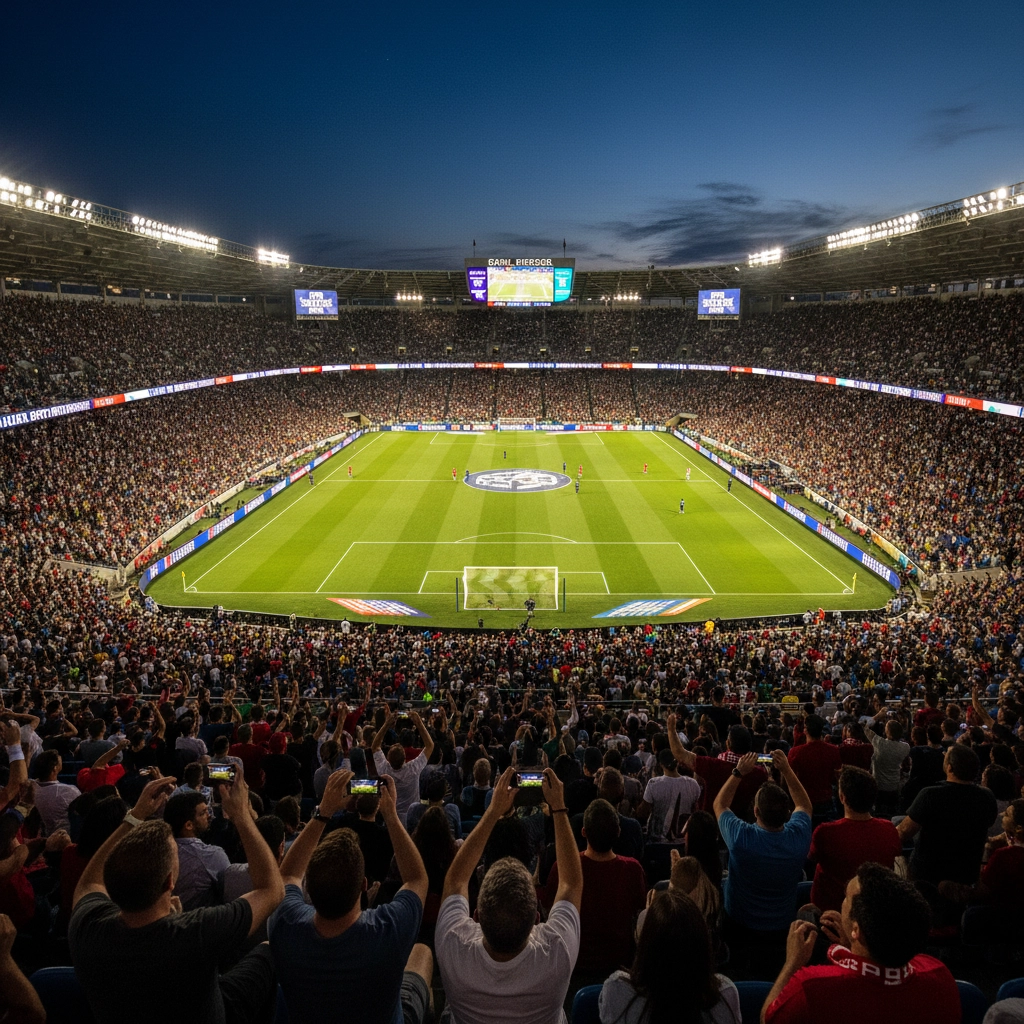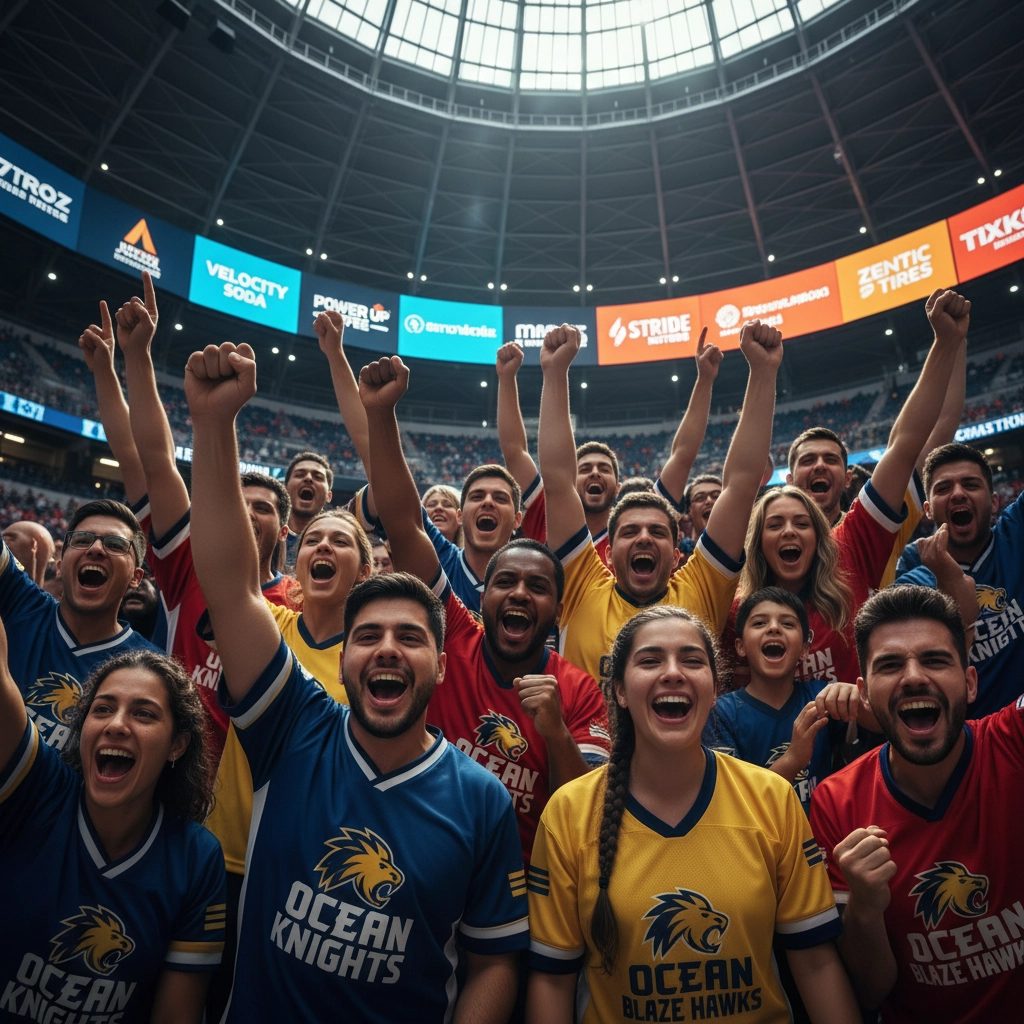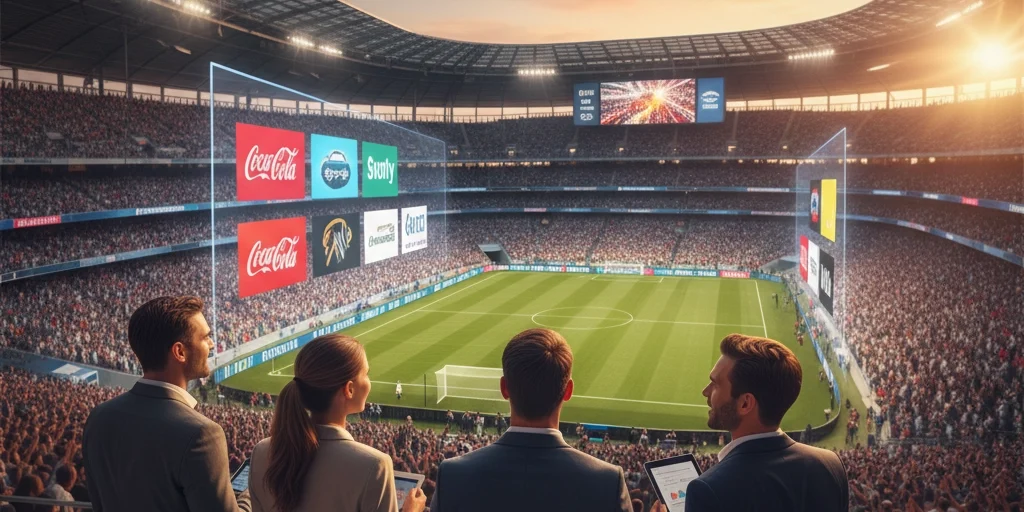Sports venue advertising has emerged as one of the most potent marketing channels available to businesses today, capitalizing on the unique psychological and emotional dynamics that define live sporting events. Unlike traditional advertising mediums where consumers actively filter out unwanted messages, sports venue advertising operates within an environment where audiences are already emotionally invested and receptive to brand messaging.
The power of this advertising medium extends far beyond simple visibility metrics. Research consistently demonstrates that sports fans represent a uniquely engaged demographic, with 67% of fans being more likely to purchase from brands that sponsor their favorite teams or events. This statistic underscores the fundamental advantage that sports venue advertising holds over conventional marketing approaches: the ability to reach consumers when they are at their most emotionally receptive state.
The Captive Audience Advantage
Sports venues create what marketing professionals recognize as the ideal advertising environment: a captive, engaged audience with extended exposure time. Unlike television commercials that viewers can skip or online ads that users can block, venue advertising becomes an integral part of the live experience. Attendees at sporting events typically spend three to four hours within the venue, providing advertisers with continuous visibility opportunities that few other mediums can match.
This extended exposure period proves particularly valuable because it allows for message reinforcement throughout the event. Studies indicate that approximately seven out of ten spectators correctly identify advertised brands within sports facilities, a recall rate significantly higher than most traditional advertising channels. The captive nature of the audience ensures that marketing messages receive repeated exposure, leading to enhanced brand recognition and recall.
The psychological state of sports fans during live events creates additional advantages for advertisers. Spectators attend these events voluntarily, often paying substantial sums for tickets, which indicates high levels of engagement and emotional investment. This emotional state makes audiences more receptive to brand messages, as they associate positive feelings from the sporting experience with the brands they encounter within the venue.

Building Emotional Connections Through Strategic Association
Sports venue advertising derives much of its effectiveness from the powerful emotional connections that exist between fans and their favorite teams. When brands align themselves with popular sports franchises, athletes, and the intense emotions surrounding live events, they tap into a reservoir of loyalty and passion that extends beyond typical consumer-brand relationships.
Research demonstrates that fan loyalty in sports creates unusually strong brand associations. Through periods of both success and failure, sports enthusiasts maintain unwavering support for their teams, and this loyalty extends to brands that demonstrate support for those same teams. This phenomenon creates brand relationships that often prove more durable and emotionally resonant than those developed through traditional marketing channels.
The association strategy becomes particularly powerful when brands integrate their messaging seamlessly into the sporting experience. Advertisements that become "part of the game" show significantly higher recall rates and more positive brand perception than those that appear disconnected from the event itself. This integration requires careful consideration of timing, placement, and creative execution to ensure that marketing messages enhance rather than disrupt the spectator experience.
Moreover, the shared experience of attending live sporting events creates community bonds among attendees, and brands that successfully position themselves within this community context benefit from social validation and peer influence. When fans see others responding positively to brand messages within their shared environment, it reinforces the effectiveness of the advertising and creates additional layers of brand credibility.
Precision Targeting and Measurable Results
Modern sports venue advertising offers sophisticated targeting capabilities that allow brands to reach specific demographics with remarkable precision. Different sporting events attract distinct audience profiles: professional football games typically draw predominantly male audiences aged 25-54, while basketball games attract more diverse age ranges and higher urban representation. Tennis tournaments and golf events tend to appeal to higher-income demographics, while hockey games attract specific regional populations.
This demographic precision enables businesses to allocate their advertising budgets more efficiently by selecting venues and events that align closely with their target market characteristics. Rather than pursuing broad-reach strategies that may result in significant waste, companies can focus their resources on environments where their ideal customers are most concentrated.

The measurement capabilities of venue advertising have evolved substantially with technological advancement. Digital displays and interactive elements allow for real-time tracking of audience engagement, while mobile app integration provides detailed analytics on viewer behavior and response rates. These measurement capabilities enable businesses to optimize their campaigns continuously and demonstrate clear return on investment to stakeholders.
Furthermore, venue advertising offers multiple touchpoint opportunities within a single event. Brands can reach audiences through exterior signage as they approach the venue, interior displays throughout the facility, scoreboard integration during game play, and interactive activations in concourse areas. This multi-touchpoint approach increases message frequency and reinforces brand awareness through varied creative executions.
Technological Innovation Enhancing Impact
The technological evolution of sports venue advertising has dramatically increased both its visual impact and effectiveness. Modern LED scoreboards and digital displays create visual experiences comparable to high-end entertainment productions, featuring vibrant colors, high-definition video content, and dynamic graphics that capture and maintain audience attention.
These technological advances have elevated spectator expectations for stadium advertising quality. Fans now expect venue advertising to match the production values they see during major televised events, creating opportunities for brands to deliver truly memorable experiences that extend far beyond simple logo placement or static messaging.
Interactive technology integration has opened new possibilities for audience engagement. QR code integration allows for immediate consumer response and data collection, while mobile app partnerships create opportunities for extended engagement before, during, and after events. Social media integration amplifies the reach of venue advertising beyond the physical attendance numbers, as fans share their experiences and brand interactions with their online networks.
The flexibility of digital advertising systems eliminates many traditional production costs while enabling brands to customize their messaging for specific games or events. This adaptability allows for seasonal campaigns, opponent-specific messaging, or real-time content updates based on game developments or external factors.

Strategic Implementation for Maximum Effectiveness
Successful sports venue advertising requires strategic planning that leverages the unique characteristics of sports environments while addressing the specific objectives of the advertising campaign. The most effective implementations begin with thorough audience research to ensure alignment between the brand's target market and the venue's typical attendance demographics.
Timing considerations prove crucial for maximizing impact. Pre-game periods when audiences are settling into their seats, timeout periods when attention naturally focuses on venue displays, and halftime presentations when audiences are most receptive to entertainment-oriented content represent optimal opportunities for brand messaging. Understanding these natural rhythm patterns within different sports allows advertisers to time their messages for maximum receptivity.
Creative execution must balance brand messaging with respect for the sporting experience. The most successful venue advertisements enhance rather than interrupt the spectator experience, often incorporating sports-themed elements or celebrating team achievements while maintaining clear brand identification. This approach requires close collaboration between marketing teams and venue operators to ensure that advertising integrates seamlessly with the overall event presentation.
Partnership opportunities extend the effectiveness of venue advertising beyond the physical space. Collaborations with team merchandising, player endorsements, and community outreach programs create multiple touchpoints that reinforce brand messaging across various contexts. These partnerships often provide additional content opportunities for social media and digital marketing extensions.
Future Outlook and Emerging Opportunities
The sports venue advertising landscape continues to evolve with emerging technologies and changing consumer behaviors. Augmented reality implementations are beginning to appear in select venues, allowing for personalized advertising experiences that overlay digital content onto the physical environment. These technologies promise to further increase engagement levels and provide more sophisticated targeting capabilities.
Sustainability considerations are increasingly influencing venue advertising decisions, with digital displays offering environmentally responsible alternatives to traditional printed materials. This shift aligns with the growing environmental consciousness among sports fans and provides brands with opportunities to demonstrate their commitment to sustainable practices.
The integration of artificial intelligence and machine learning technologies into venue advertising systems promises to deliver more personalized and responsive advertising experiences. These systems can analyze audience behavior in real-time and adjust messaging accordingly, optimizing engagement and response rates throughout individual events.
Sports venue advertising represents a powerful marketing channel that capitalizes on the unique emotional and psychological dynamics of live sporting events. Its effectiveness stems from the combination of captive, engaged audiences, extended exposure opportunities, and strong emotional associations that create lasting brand connections. As technology continues to advance and measurement capabilities improve, the power of sports venue advertising will likely continue to grow, offering businesses increasingly sophisticated ways to reach their target audiences in highly receptive environments.
The strategic implementation of venue advertising requires careful consideration of audience characteristics, timing, creative execution, and technological capabilities. However, businesses that successfully navigate these considerations can expect to achieve brand awareness levels, customer engagement metrics, and loyalty indicators that significantly exceed those of traditional advertising channels.







